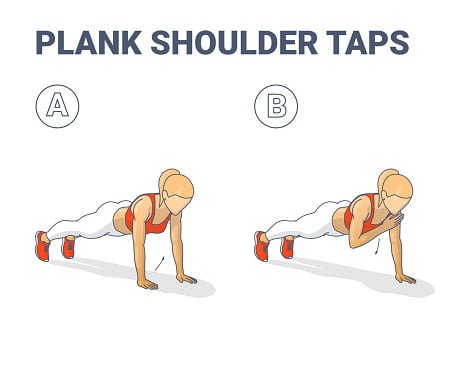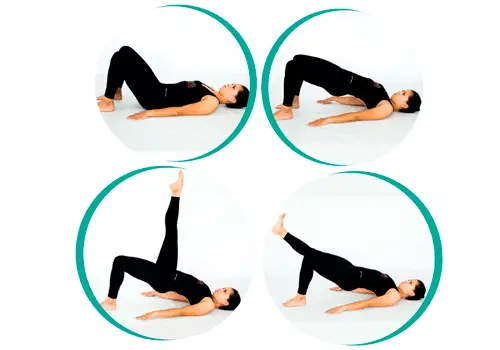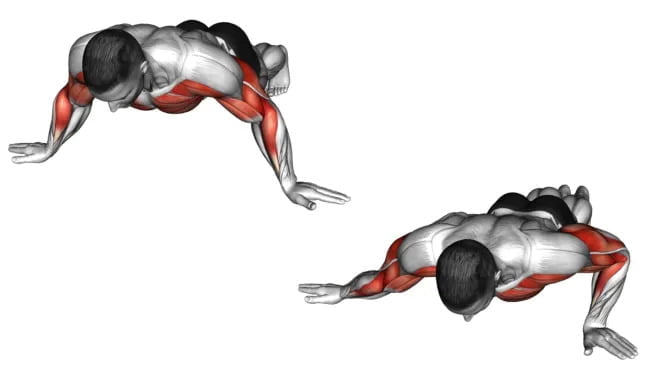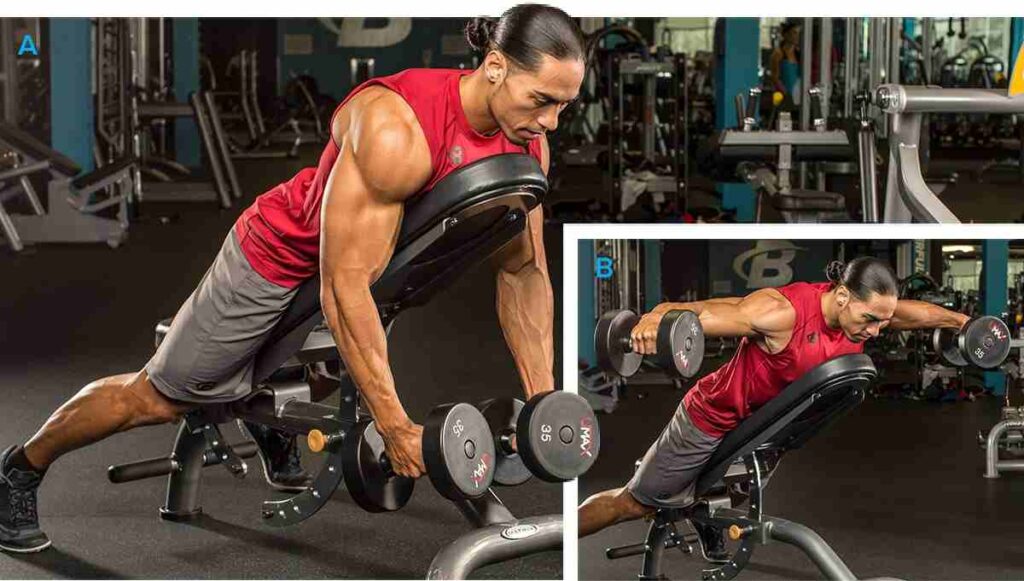Shoulders play a crucial role in various everyday activities and movements, such as reaching, lifting, pushing, and pulling. Having strong and stable shoulders can improve your ability to perform these activities with ease and prevent injuries. Shoulder strength is also essential for various sports and fitness activities, such as swimming, tennis, weightlifting, and CrossFit. Strong and stable shoulders can enhance your athletic performance, reduce the risk of injuries, and help you achieve your fitness goals.
Bodyweight exercises are an effective and convenient way to train your shoulders without needing any equipment or a gym membership. They can be performed anywhere, at any time, making them an ideal option for those who want to exercise at home, while traveling, or on a budget. Additionally, bodyweight exercises allow for a wide range of motion and can target multiple muscle groups simultaneously, which can help improve overall shoulder strength and stability.
Finally, bodyweight exercises are typically low-impact, making them a safe and accessible option for people of all fitness levels and ages. By incorporating the best shoulder bodyweight exercises into your workout routine, you can improve your shoulder strength, stability, and overall fitness.
Warm-Up Exercises
Before starting any exercise routine, it’s essential to perform a warm-up to prepare the body for the workout ahead. Warming up is important because it helps to increase blood flow to the muscles, raise body temperature, and prepare the body for physical activity. Warm-up exercises also help to reduce the risk of injury by loosening up the muscles and joints, increasing flexibility, and range of motion. Warming up also prepares the cardiovascular system for exercise by increasing heart and breathing rates. Neglecting to warm-up before exercise can lead to muscle strain, joint pain, and other injuries.

Warm-up exercises to prepare the shoulders for the workout ahead:
- Arm Circles – Stand with your feet shoulder-width apart, and extend your arms out to the side, parallel to the floor. Begin making small circular motions with your arms, gradually increasing the size of the circles until they are as large as possible. Repeat for 10-20 reps, then switch directions and repeat.
- Shoulder Rolls – Stand with your feet shoulder-width apart, and roll your shoulders forward in a circular motion, making small circles at first and gradually increasing the size of the circles. After 10-20 reps, roll your shoulders backward in the same way.
- Wall Angels – Stand with your back against a wall, and your arms at your sides. Slowly raise your arms up to shoulder height, and then bend your elbows to create a 90-degree angle. Move your arms up and down, maintaining contact with the wall, for 10-20 reps. This exercise helps to improve posture, shoulder mobility, and stability.
Performing these warm-up exercises for Best Shoulder Bodyweight Exercises will help prepare the shoulders for the workout ahead by increasing blood flow, loosening up the muscles, and improving mobility and flexibility.
Standing Exercises
Here are 3 standing bodyweight exercises that target the shoulders along with instructions on how to perform each exercise and an explanation of the specific shoulder muscles targeted by each exercise.
- Pike Push-Up

- Start in a downward dog position with your hands on the ground shoulder-width apart and your feet hip-width apart.
- Walk your feet in towards your hands, lifting your hips towards the ceiling.
- Lower your head towards the ground by bending your elbows, keeping your legs straight and your hips lifted.
- Push back up to the starting position.
- This exercise targets the anterior deltoid, which is the front part of your shoulder, as well as the triceps and upper chest muscles.
- Handstand Push-Up

- Start in a handstand position with your hands shoulder-width apart on the ground and your feet against a wall.
- Lower your head towards the ground by bending your elbows, keeping your legs straight and your body in a straight line.
- Push back up to the starting position.
- This exercise targets the anterior deltoid, as well as the triceps, upper chest, and stabilizing muscles of the shoulder girdle.
- Shoulder Taps

- Start in a high plank position with your hands on the ground shoulder-width apart and your feet hip-width apart.
- Lift your right hand off the ground and tap your left shoulder.
- Place your right hand back on the ground and repeat on the other side, tapping your right shoulder with your left hand.
- Keep your core engaged and your hips stable throughout the exercise.
- This exercise targets the stabilizing muscles of the shoulder girdle, as well as the triceps and upper chest muscles.
Overall, these standing bodyweight exercises target different parts of the shoulder, including the anterior deltoid, triceps, upper chest, and stabilizing muscles of the shoulder girdle. They are effective exercises for strengthening and sculpting the shoulders without the need for weights or equipment.
Floor Exercises
Here are three floor-based bodyweight exercises that are great for targeting the shoulders, along with detailed instructions on how to perform each exercise and an explanation of the specific shoulder muscles targeted by each exercise:

- Push-Up: The push-up is a classic bodyweight exercise that targets the chest, triceps, and shoulders. To perform a push-up, start in a plank position with your hands placed slightly wider than shoulder-width apart. Lower your body until your chest nearly touches the ground, then push back up to the starting position. Throughout the exercise, engage your core and keep your elbows close to your body to target your shoulders more effectively.
Specific shoulder muscles targeted: Push-ups primarily target the anterior deltoids, the front part of your shoulder muscles.
- Plank Taps: Plank taps are an effective exercise for targeting the shoulders, core, and arms. To perform a plank tap, start in a high plank position with your shoulders directly over your wrists. While keeping your hips as stable as possible, lift one hand off the ground and tap it on the opposite shoulder, then lower it back down. Repeat on the other side, alternating sides for several repetitions.
Specific shoulder muscles targeted: Plank taps primarily target the medial deltoids, the middle part of your shoulder muscles.
- Shoulder Bridge: The shoulder bridge is a great exercise for strengthening the entire shoulder girdle, as well as the core, glutes, and hamstrings. To perform a shoulder bridge, lie on your back with your knees bent and your feet flat on the ground. Lift your hips up towards the ceiling, keeping your shoulder blades firmly planted on the ground. Hold the bridge for a few seconds, then lower your hips back down to the starting position.
Specific shoulder muscles targeted: Shoulder bridges primarily target the posterior deltoids, the back part of your shoulder muscles.
Overall, these floor-based bodyweight exercises are a great addition to any shoulder workout routine, helping to build strength, stability, and mobility in the shoulders while also engaging other muscles in the body. Remember to start with a manageable number of repetitions and gradually increase as your strength and fitness level improves.
Advanced Exercises
Here are 2-3 advanced bodyweight shoulder exercises that can take your shoulder training to the next level:

- Handstand Push-Ups: Handstand push-ups are advanced shoulder exercise that targets the shoulders, triceps, and upper back muscles. To perform a handstand push-up, start by kicking up into a handstand position against a wall with your hands shoulder-width apart. Lower your body down towards the ground, keeping your elbows close to your body, until your head touches the ground. Push back up to the starting position, making sure to keep your core engaged and your legs straight. Repeat for the desired number of repetitions.
- Archer Push-Ups: Archer push-ups are a challenging variation of the traditional push-up that targets the shoulders, chest, and triceps muscles. To perform an archer push-up, start in a plank position with your hands wider than shoulder-width apart. Lower your body down towards the ground, while keeping one arm straight and the other arm bent with your elbow flared out to the side. Push back up to the starting position and switch arms, keeping the opposite arm straight and the other arm bent. Repeat for the desired number of repetitions.
- Pike Push-Ups: Pike push-ups are advanced bodyweight exercise that targets the shoulders and triceps muscles. To perform a pike push-up, start in a downward dog position with your feet hip-width apart and your hands shoulder-width apart. Lower your head towards the ground, while keeping your elbows close to your body, until your head touches the ground. Push back up to the starting position, making sure to keep your core engaged and your legs straight. Repeat for the desired number of repetitions.
When performing advanced bodyweight shoulder exercises like these, it’s important to keep good form throughout the exercise and not push yourself beyond your physical capabilities. These exercises can be challenging and should be performed with caution to prevent injury. It’s also important to remember that consistent training and proper nutrition are key to achieving strong and sculpted shoulders with the help of the Best Shoulder Bodyweight Exercises.
Cool-Down Stretches
After completing any exercise, including Best Shoulder Bodyweight Exercises, it is essential to cool down. Cooling down refers to engaging in low-intensity exercises or stretches to help the body return to its normal state. The benefits of cooling down include reducing the risk of injury, improving recovery time, and reducing post-workout soreness.
When you exercise, your heart rate increases, and your blood vessels dilate to deliver oxygen and nutrients to the muscles. The sudden stop in activity can cause blood to pool in the muscles, which can lead to dizziness or fainting. Cooling down helps the body gradually return to its pre-exercise state, allowing the heart rate and blood flow to decrease slowly. This gradual process also helps to remove waste products such as lactic acid, which can cause muscle soreness and fatigue.
Here are some simple cool-down stretches that can be done after performing Best Shoulder Bodyweight Exercises:
- Shoulder Rolls: Stand with your feet shoulder-width apart and your arms hanging at your sides. Slowly roll your shoulders forward in a circular motion for 10-15 repetitions. Then, reverse the direction and roll your shoulders backward for another 10-15 repetitions. This stretch helps to release tension in the shoulders and upper back.
- Overhead Triceps Stretch: Raise your right arm overhead and bend your elbow, so your hand falls behind your head. With your left hand, gently pull your right elbow towards your left side until you feel a stretch in your triceps and shoulder. Hold the stretch for 15-20 seconds and repeat on the other side. This stretch helps to release tension in the triceps, shoulders, and upper back.
- Child’s Pose: Begin on all fours with your hands and knees on the ground. Lower your hips back towards your heels, stretching your arms out in front of you. Relax your head and neck towards the ground, taking deep breaths for 15-20 seconds. This stretch helps to release tension in the shoulders, upper back, and chest.
It is important to remember to hold each stretch for 15-20 seconds and not push yourself too hard, as this can cause injury. These cool-down stretches are an excellent way to release tension in the shoulders and help the body recover after performing Best Shoulder Bodyweight Exercises.
Benefits of Strong Shoulders
Here are some benefits of having strong shoulders that can be achieved by incorporating the Best Shoulder Bodyweight Exercises in a fitness routine:
- Improved posture and stability
- Reduced risk of shoulder injuries
- Increased upper body strength and power
- Improved athletic performance in sports that require upper body strength and mobility
- Enhanced overall physical appearance with toned and sculpted shoulders
- Improved functionality in everyday activities, such as lifting and carrying objects
- Improved shoulder joint mobility and flexibility
- Reduced neck and upper back pain by strengthening the muscles that support the shoulders
- Improved bone density and reduced risk of osteoporosis, especially in older adults who incorporate weight-bearing exercises in their workout routine.
Remember, incorporating the Best Shoulder Bodyweight Exercises into a fitness routine can help individuals achieve these benefits.
Tips for Proper Form and Technique
Proper form and technique are crucial when performing the Best Shoulder Bodyweight Exercises. It ensures that the targeted muscles are worked effectively while reducing the risk of injury. Here are some tips for maintaining proper form and technique:
Proper form and technique are important when performing any exercise, especially when it comes to bodyweight shoulder exercises. It ensures that the shoulder muscles are targeted correctly, and it reduces the risk of injury. Proper form and technique also help to maximize the effectiveness of the exercise and ensures that you get the most out of your workout.
Tips on how to maintain proper form and technique throughout the exercises
To maintain proper form and technique, it’s essential to start each exercise in the correct position. For example, when performing push-ups, ensure that your hands are directly under your shoulders, and your body is in a straight line. Also, engage your core muscles to maintain a stable position throughout the exercise. When performing bodyweight shoulder exercises, avoid swinging or using momentum to complete the movement, as this can reduce the effectiveness of the exercise.
How improper form can increase the risk of injury
Improper form can increase the risk of injury when performing bodyweight shoulder exercises. For example, when performing a plank, allowing your hips to sag or lift too high can put unnecessary strain on your shoulder muscles and lower back. Improper form can also increase the risk of muscle imbalances, which can lead to injuries over time. It’s essential to start with proper form and technique and work your way up to more challenging variations once you have mastered the correct form.
In conclusion, maintaining proper form and technique is essential when performing the Best Shoulder Bodyweight Exercises. It ensures that the targeted muscles are worked effectively while reducing the risk of injury. Remember to start each exercise in the correct position, engage your core muscles, and avoid swinging or using momentum to complete the movement. Always start with proper form and technique and work your way up to more challenging variations.
Modifications for Beginners and Advanced Trainees
When it comes to bodyweight shoulder exercises, it’s important to make modifications based on an individual’s fitness level. Here are some modifications for both beginners and advanced trainees:
Modifications for Beginners
- Wall Push-Ups: If a regular push-up is too difficult, beginners can start with wall push-ups. Stand facing a wall with your arms straight out in front of you at shoulder height. Place your hands on the wall, slightly wider than shoulder-width apart. Slowly bend your elbows and lean in towards the wall, then push yourself back to the starting position. This exercise can help build upper body strength and prepare you for traditional push-ups.
- Shoulder Taps: This exercise is great for beginners who may not be ready for more advanced plank exercises. Start in a high plank position with your shoulders directly over your hands. Lift your right hand off the ground and tap your left shoulder. Return your right hand to the ground and repeat with your left hand. Focus on keeping your hips stable and your core engaged throughout the exercise.
- Arm Circles: This exercise is a great way to improve shoulder mobility and flexibility. Stand with your feet shoulder-width apart and raise your arms out to the sides at shoulder height. Begin making small circles with your arms, gradually increasing the size of the circles. Repeat in the opposite direction.
- Incline Push-Ups: This exercise is another modification of the traditional push-up that is easier than a regular push-up but more challenging than wall push-ups. Place your hands on an elevated surface, such as a bench or a step, and lower yourself down toward the surface. Push yourself back up to the starting position. The higher the surface, the easier the exercise.
- Scapular Push-Ups: This exercise is a great way to improve shoulder blade stability and strength. Start in a high plank position with your shoulders directly over your hands. Without bending your elbows, push your shoulder blades towards each other, then relax them. Repeat for several reps.
Modifications for Advanced Trainees
- Handstand Push-Ups: This exercise is an advanced variation of a traditional push-up that targets the shoulders and requires significant upper body strength. Start in a handstand position against a wall, with your hands shoulder-width apart and your feet resting against the wall. Slowly lower your head towards the ground, then push yourself back up to the starting position.
- Spiderman Push-Ups: This exercise is a challenging variation of a traditional push-up that targets the shoulders, chest, and core. Start in a high plank position with your shoulders directly over your hands. As you lower your body towards the ground, lift your right leg and bring your knee towards your right elbow. Push yourself back up to the starting position, then repeat on the left side.
- Pike Push-Ups: This exercise targets the shoulders and requires significant upper body strength. Start in a downward dog position with your hands shoulder-width apart and your feet hip-width apart. Slowly lower your head towards the ground, keeping your elbows close to your body. Push yourself back up to the starting position.
- Single Arm Push-Ups: This exercise is an extremely challenging variation of a traditional push-up that targets the shoulders, chest, and triceps. Start in a regular push-up position, but shift your weight onto one arm and lift the other arm off the ground. Slowly lower your body towards the ground, keeping your elbow close to your body. Push yourself back up to the starting position, then repeat on the other side.
- Pike Push-Ups with Feet Elevated: This exercise is a more advanced version of the pike push-up that requires more strength and stability. Start in a downward dog position with your feet resting on an elevated surface, such as a bench or a step. Slowly lower your head towards the ground, keeping your elbows close to your body. Push yourself back up to the starting position. The higher the surface, the more challenging the exercise.
Remember, it’s important to start with modifications that are appropriate for your fitness level and gradually progress as you build strength and confidence. Always focus on maintaining proper form and technique to avoid injury.
Conclusion
Incorporating bodyweight shoulder exercises into your fitness routine can be a great way to improve your shoulder health and strength. By performing these exercises regularly, you can improve shoulder mobility, stability, and overall strength. Some of the best bodyweight shoulder exercises include push-ups, shoulder taps, arm circles, handstand push-ups, spiderman push-ups, and pike push-ups.
It’s important to start with modifications that are appropriate for your fitness level and gradually progress as you build strength and confidence. Always focus on maintaining proper form and technique to avoid injury.
In conclusion, whether you’re a beginner or an advanced trainee, incorporating bodyweight shoulder exercises into your fitness routine can be a great way to improve your overall fitness and wellbeing. By taking the time to work on your shoulder strength and mobility, you can reduce your risk of injury and improve your performance in other exercises and activities. So don’t hesitate to give these exercises a try and see how they can benefit your fitness journey.
If you’ve found our content helpful, please consider supporting our efforts to create more valuable resources by making a donation today. Your contribution helps us continue to provide high-quality, informative content to our readers. DONATE HERE

Good day, and welcome to Fitthour. My name is Shubham Vijay, and I am a certified personal trainer and nutrition coach with 6 years of experience in the fitness industry. At Fitthour, we specialize in types of training, such as strength training, cardio, or HIIT, and our mission is to help clients achieve their fitness goals and improve their overall health.




